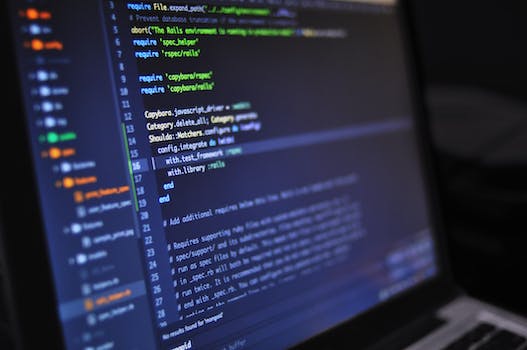-
Table of Contents
- How is a Code Block Indicated in Python
- What is a Code Block?
- Indentation in Python
- Example:
- Nested Code Blocks
- Example:
- Benefits of Code Blocks
- Case Study: Web Development
- Example:
- Conclusion
- Q&A
- Q: Can code blocks be empty in Python?
- Q: How do you handle errors in nested code blocks?
- Q: Are there any limitations to the depth of nested code blocks in Python?
- Q: Can code blocks span multiple lines in Python?
- Q: How do you refactor code blocks in Python?

Python is a versatile and powerful programming language that is widely used for various applications, from web development to data analysis. One of the key features of Python is its use of code blocks to group statements together. In this article, we will explore how code blocks are indicated in Python and how they can be used effectively in your programs.
What is a Code Block?
A code block in Python is a set of statements that are grouped together and executed as a single unit. Code blocks are used to define the structure of a program and control the flow of execution. In Python, code blocks are indicated by their indentation level, rather than by explicit delimiters such as curly braces or keywords.
Indentation in Python
In Python, indentation is used to indicate the beginning and end of a code block. Indentation is typically done using spaces or tabs, but it is important to be consistent in your use of indentation throughout your code. The standard convention in Python is to use four spaces for each level of indentation.
Example:
“`python
if x > 5:
print(“x is greater than 5”)
else:
print(“x is less than or equal to 5”)
“`
Nested Code Blocks
In Python, code blocks can be nested within each other to create more complex program structures. When nesting code blocks, it is important to maintain consistent indentation levels to ensure that the code is easy to read and understand.
Example:
“`python
if x > 5:
if y > 10:
print(“x is greater than 5 and y is greater than 10”)
else:
print(“x is greater than 5 but y is less than or equal to 10”)
else:
print(“x is less than or equal to 5”)
“`
Benefits of Code Blocks
- Organize code logically
- Improve readability
- Facilitate code reuse
- Control flow of execution
Case Study: Web Development
In web development, code blocks are commonly used to define the structure of a webpage and control the behavior of interactive elements. By using code blocks effectively, developers can create dynamic and responsive web applications that provide a seamless user experience.
Example:
“`python
def calculate_total_price(quantity, price):
subtotal = quantity * price
tax = subtotal * 0.1
total = subtotal + tax
return total
“`
Conclusion
In conclusion, code blocks are a fundamental aspect of Python programming that allow developers to organize their code, control the flow of execution, and create complex program structures. By understanding how code blocks are indicated in Python and using them effectively in your programs, you can write more efficient and maintainable code.
Q&A
Q: Can code blocks be empty in Python?
A: Yes, code blocks can be empty in Python, but it is generally considered good practice to include a comment or placeholder to indicate the purpose of the empty block.
Q: How do you handle errors in nested code blocks?
A: Errors in nested code blocks can be handled using try-except blocks to catch and handle exceptions at different levels of nesting.
Q: Are there any limitations to the depth of nested code blocks in Python?
A: While there is no strict limit to the depth of nested code blocks in Python, excessive nesting can make code difficult to read and maintain, so it is important to use nesting judiciously.
Q: Can code blocks span multiple lines in Python?
A: Yes, code blocks can span multiple lines in Python as long as the lines are consistently indented to the same level.
Q: How do you refactor code blocks in Python?
A: Code blocks can be refactored in Python by extracting common functionality into functions or classes, reducing redundancy and improving code maintainability.






